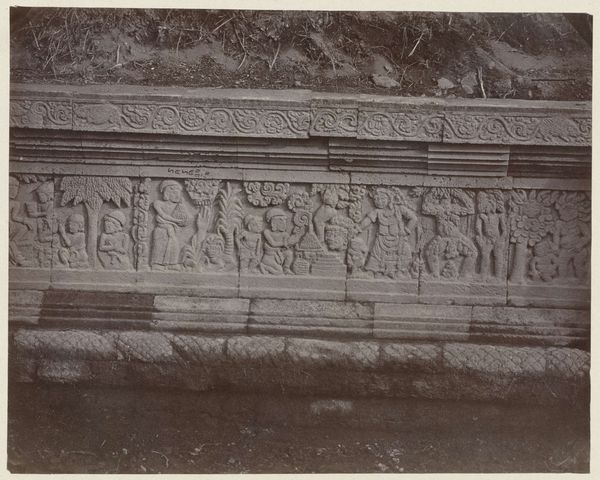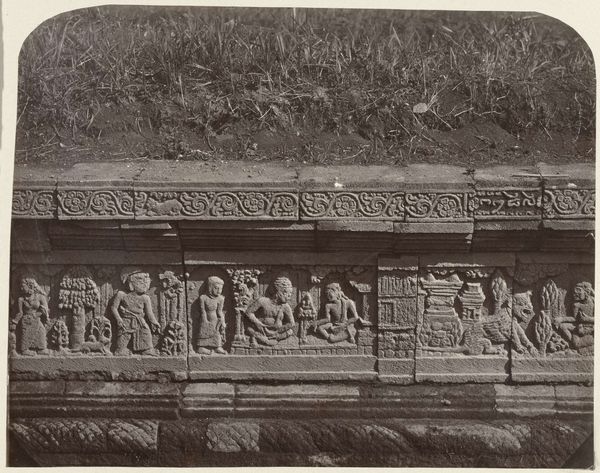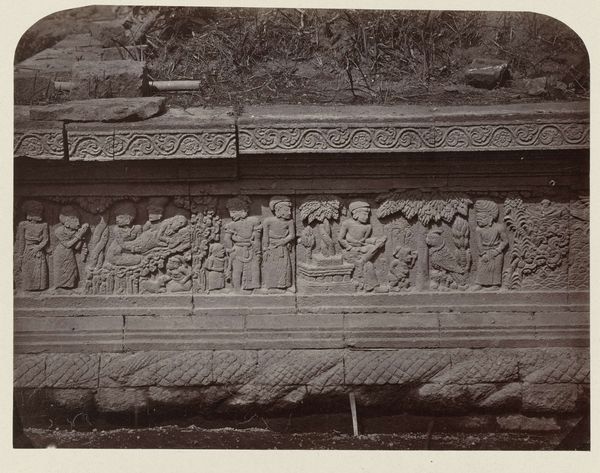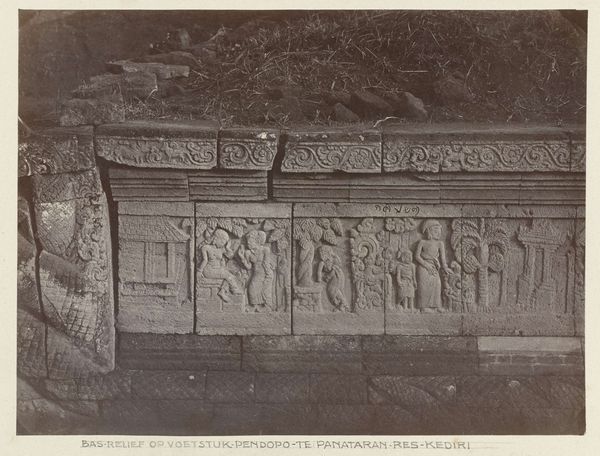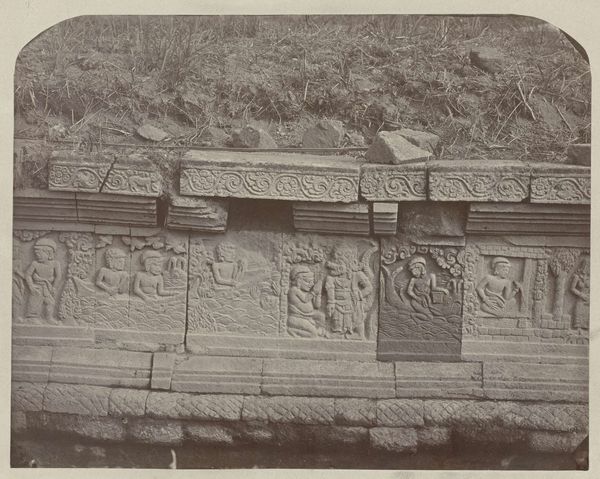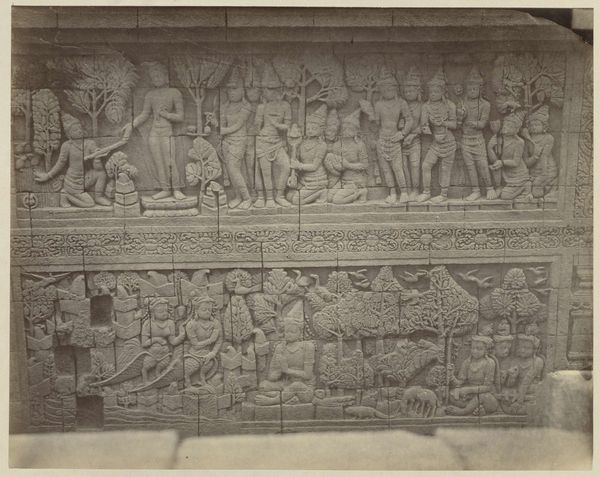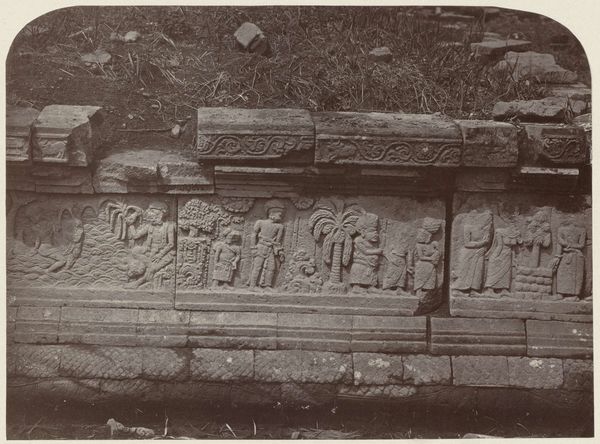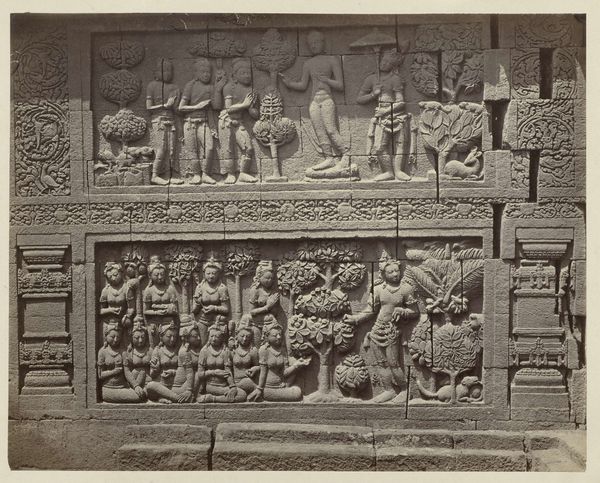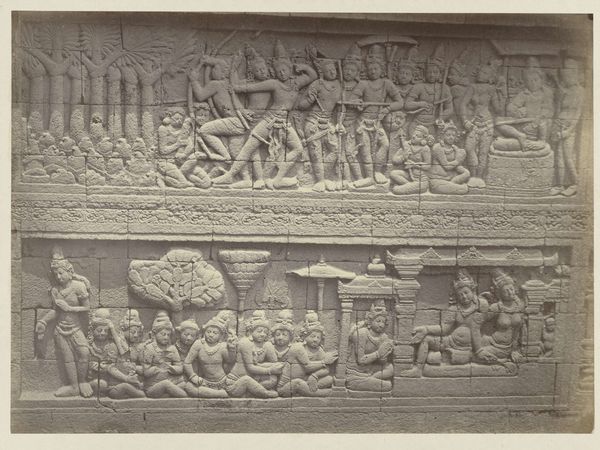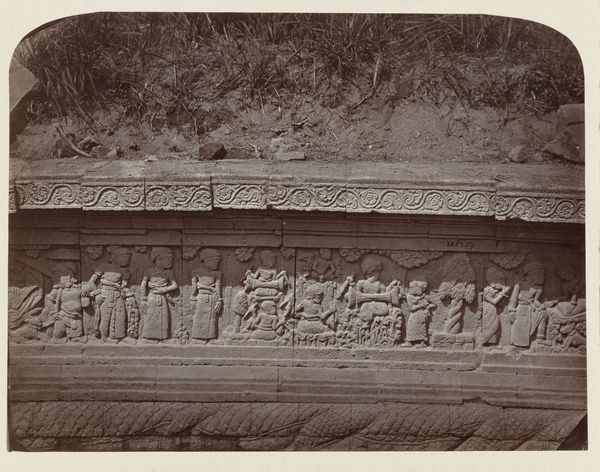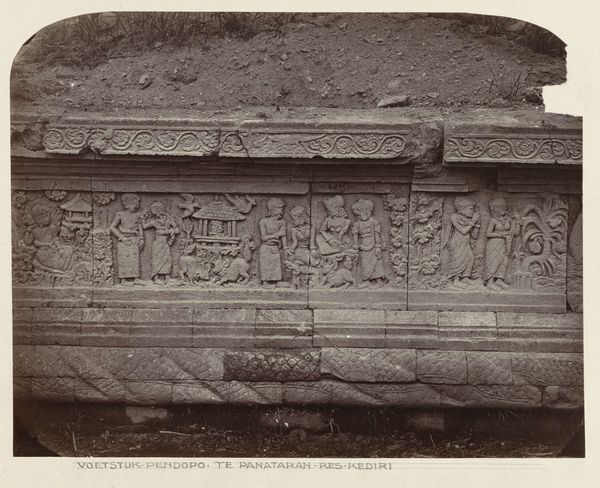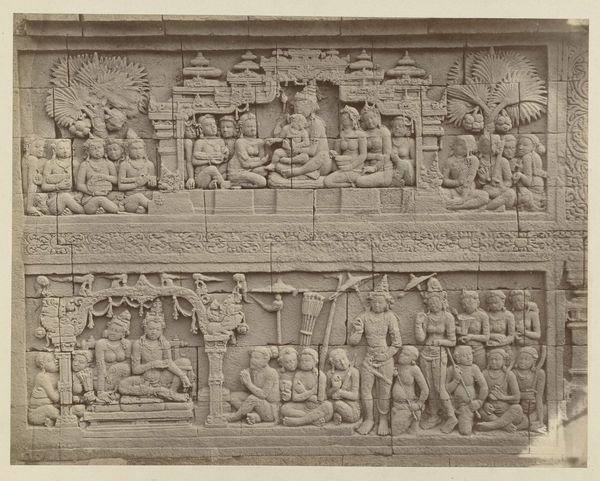
Basreliëf met Bubaksha en Gagang Aking op het voetstuk van een pendopo aan de oostzijde Candi Panataran Possibly 1867
0:00
0:00
print, relief, bronze, photography, sculpture
#
narrative-art
# print
#
sculpture
#
asian-art
#
relief
#
landscape
#
bronze
#
figuration
#
photography
#
carved into stone
#
ancient-mediterranean
#
sculpture
Dimensions: height 210 mm, width 260 mm
Copyright: Rijks Museum: Open Domain
Editor: This is a photograph of a bas-relief, "Basreliëf met Bubaksha en Gagang Aking op het voetstuk van een pendopo aan de oostzijde Candi Panataran," possibly from 1867, taken by Isidore Kinsbergen. The stone carving feels really ancient and monumental. What do you see when you look at this piece? Curator: What I see is a moment captured from a larger narrative, likely religious or mythological. Considering Kinsbergen's presence in Indonesia at this time, this image exists at the intersection of Dutch colonialism and Javanese artistic traditions. This documentation itself is an act of framing a culture, wouldn't you agree? The relief presents the tale of Bubaksha and Gagang Aking, and we might interpret it through the lens of power dynamics present at the time. How does the act of photographing a subjugated culture affect its image? Editor: That's fascinating. I hadn't thought about it in terms of power dynamics. So the photograph isn't just a neutral record. It’s participating in the colonial project. Curator: Precisely! The figures, frozen in stone and then in photograph, become specimens within a colonial gaze. We can then explore the role of visual culture in reinforcing hierarchies and shaping perceptions about the colonized. This work encourages us to confront uncomfortable histories, challenging the romantic narratives often associated with Southeast Asian art. Editor: So, by acknowledging the colonial context, we can be more aware of the possible interpretations? Curator: Absolutely. Examining the social and political circumstances behind this piece complicates a straightforward appreciation of its beauty. Editor: That makes so much sense. Thanks! Curator: A photograph like this challenges us to actively dismantle lingering prejudices. Hopefully we can strive for an decolonized gaze in our analysis of art history.
Comments
No comments
Be the first to comment and join the conversation on the ultimate creative platform.
